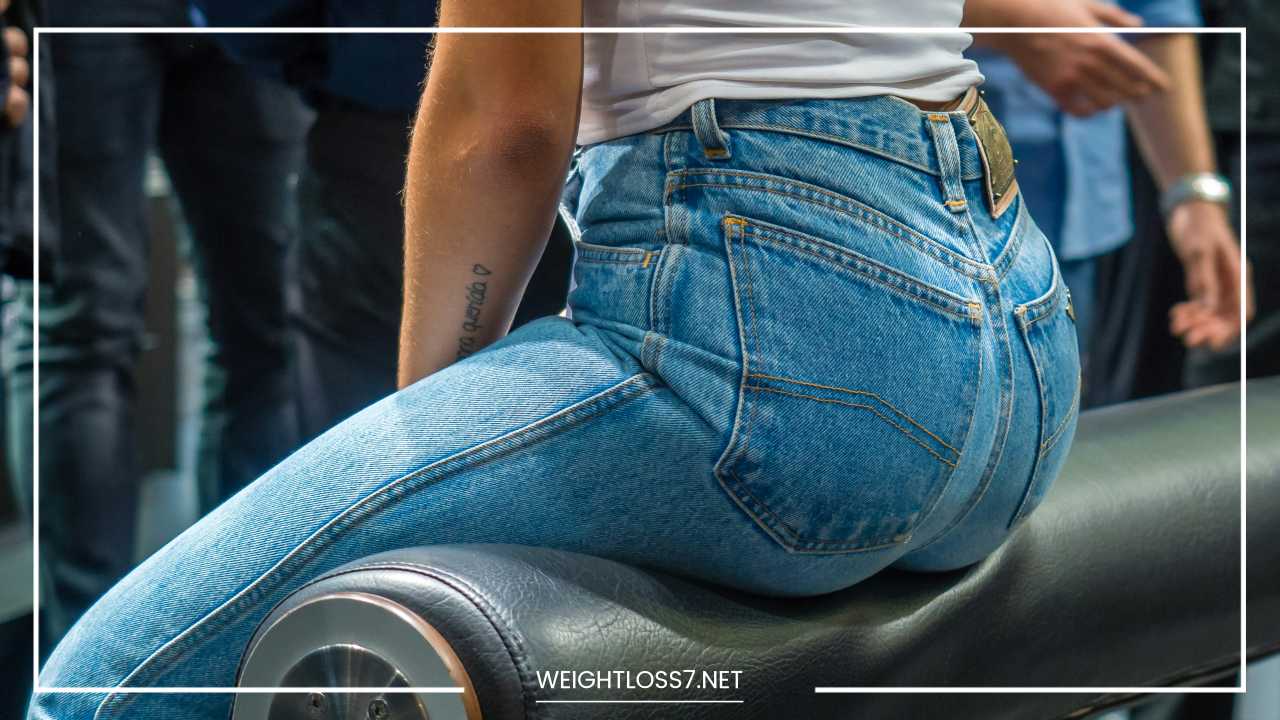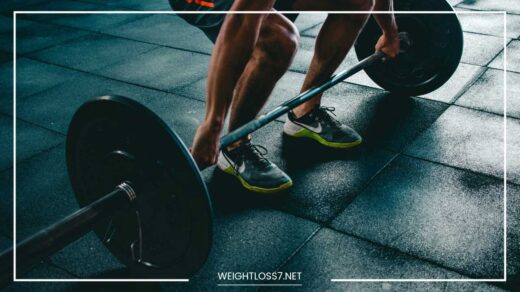How to Lose Hip Fat

Lose Hip Fat
Shedding From Your Sides: A Comprehensive Guide to Losing Hip Fat and Building a Stronger You
Hips don’t lie, as the song goes, but sometimes they hold onto a little more than we’d like. Genetics and body composition can play a role, but fear not!
Here’s the good news: with a strategic combination of smart diet and exercise strategies, you can effectively reduce hip fat and achieve a more sculpted, toned lower body.
This comprehensive guide dives deep into the world of hip fat loss, offering a realistic and sustainable approach that goes beyond the myths of spot reduction.
We’ll explore not only effective exercises and dietary tweaks, but also the importance of sleep, stress management, and other lifestyle factors that contribute to lasting success.
Understanding Fat Loss: Why Spot Reduction is a Myth
First things first, let’s address a common misconception: you can’t target fat loss to specific areas. Our bodies lose fat in a predetermined pattern based on genetics and hormones.
So, while you can’t shrink your hips in isolation, you can definitely reduce overall body fat, leading to a slimmer appearance in your hips, thighs, and buttocks.
Diet: The Bedrock of Sustainable Fat Loss
A healthy diet is the cornerstone of any successful fat-loss journey. Here’s where we’ll build a strong foundation for your success:
- Calorie Control is Key: Aim for a slight calorie deficit, meaning you consume fewer calories than you burn each day. Online calculators or a consultation with a registered dietitian can help you determine your specific daily calorie needs.
- Macronutrient Balance is Your Friend: Focus on a balanced plate that incorporates all the essential food groups. Prioritize protein (for muscle building and satiety), complex carbohydrates (for sustained energy), and healthy fats (for hormone regulation and cell health).
- Whole Foods are Your Allies: Make whole, unprocessed foods like fruits, vegetables, lean proteins, and whole grains your dietary heroes. These foods are packed with essential nutrients, fiber, and keep you feeling fuller for longer, reducing cravings and aiding portion control.
- Limit Processed Food Villains: Processed foods tend to be high in calories, unhealthy fats, added sugars, and sodium. Minimize sugary drinks, refined carbohydrates (white bread, pastries), and processed meats.
- Mindful Eating is Your Superpower: Develop a mindful relationship with food. Pay attention to hunger and fullness cues. Eat slowly, savor your food, and avoid distractions while eating. This mindful approach allows you to make conscious choices and prevents mindless overeating.
Exercise: Building Muscle and Burning Calories for a Double Whammy
Exercise plays a crucial role in fat loss and building a strong, sculpted physique. Here’s a two-pronged approach to maximize your results:
- Cardio Gets Your Heart Pumping: Aim for at least 150 minutes of moderate-intensity cardio or 75 minutes of vigorous cardio per week. Activities like brisk walking, running, swimming, biking, or dancing are all effective options. Cardio helps you burn calories and create a calorie deficit for fat loss.
- Strength Training Builds Your Powerhouse: Include strength training exercises that target your lower body muscles, including your glutes, hamstrings, and quads. Squats, lunges, glute bridges, deadlifts, and step-ups are excellent choices. Strength training builds muscle, which boosts your metabolism and helps you burn more calories at rest, even when you’re not actively exercising. This “afterburn effect” is a powerful tool for long-term weight management.
Sample Hip-Focused Workout Routine for a Sculpted Lower Body
Here’s a sample workout routine you can do 2-3 times a week, focusing on your hips and lower body. Remember, this is just a starting point! You can adjust the exercises, sets, reps, and weights based on your fitness level and progress. It’s also important to listen to your body and take rest days when needed.
Warm-Up (5 minutes): Light cardio (jumping jacks, jogging in place) and dynamic stretches (leg swings, arm circles) to get your blood flowing and prepare your muscles for work.
Strength Training (3 sets of 10-12 repetitions each exercise):
- Squats (bodyweight or with weights): The king of lower body exercises, squats target your glutes, quads, hamstrings, and core.
- Lunges (forward lunges, reverse lunges, walking lunges): Lunges work your glutes, quads, hamstrings, and core with a unilateral focus, improving balance and stability.
- Glute Bridges (with or without weight): Glute bridges specifically target your glutes and hamstrings, lifting and shaping your backside.
- Side lunges: These target your outer hips, glutes, and core. Step laterally with one leg, lowering your hips until your other knee is bent at a 90-degree angle. Keep your torso upright and core engaged. Push back up to the starting position and repeat on the other side.
- Deadlifts (bodyweight or with weights): Deadlifts are a compound exercise that works your entire posterior chain, including your glutes, hamstrings, lower back, and core. Start with proper form to avoid injury.
- Step-ups (using a bench or stair): Step-ups work your quads, glutes, and hamstrings while improving coordination and balance. Step up onto a bench or stair, bringing your knee towards your chest, then step back down and repeat with the other leg.
- Clamshells: This exercise isolates and strengthens your inner hip muscles, promoting stability and proper hip alignment. Lie on your side with knees bent and stacked. Open your top knee while keeping your feet together, creating a “clamshell” motion. Engage your glutes and lower your knee back down with control.
Cool-Down (5 minutes): Dedicate time to static stretches (hamstring stretch, quad stretch, calf stretch) to improve flexibility and prevent muscle soreness.
Beyond the Gym: Lifestyle Hacks for Sustainable Fat Loss
While diet and exercise are the cornerstones of fat loss, incorporating healthy lifestyle habits can significantly boost your progress and create lasting change:
- Get Enough Sleep: Aim for 7-8 hours of quality sleep each night. Sleep deprivation disrupts hormones that regulate appetite and metabolism, making it harder to lose weight and control cravings.
- Manage Stress: Chronic stress can lead to cortisol production, a hormone linked to increased belly fat storage. Practice stress-reduction techniques like yoga, meditation, deep breathing, or spending time in nature.
- Stay Hydrated: Drinking plenty of water throughout the day is crucial for several reasons. Water aids in metabolic function, helps curb cravings, and keeps you feeling full. Aim for eight glasses of water daily, adjusting based on your activity level and climate.
- Limit Alcohol: Alcohol is high in calories and can hinder your weight-loss efforts. Enjoy alcoholic beverages in moderation or eliminate them altogether for faster results.
- Be Patient and Consistent: Sustainable weight loss takes time and effort. Don’t get discouraged by setbacks; focus on consistency and progress over perfection. Celebrate small victories and remember, slow and steady wins the race.
Building a Sustainable Support System
Consider these tips to create a supportive environment for your fat-loss journey:
- Find an Accountability Partner: Having a friend, family member, or workout buddy to share your goals and challenges with can be a great motivator.
- Consult a Registered Dietitian: A registered dietitian can create a personalized meal plan that aligns with your needs and preferences.
- Consider a Fitness Trainer: A trainer can guide you with proper exercise form, create customized workout routines, and provide valuable support and motivation.
Advanced Strategies for Faster Results
This section dives deeper for those seeking to accelerate their fat-loss journey. Remember, these are additional strategies to build upon the core principles already discussed.
- High-Intensity Interval Training (HIIT): HIIT workouts alternate between short bursts of intense activity and periods of rest or low-intensity exercise. This style of training burns a significant amount of calories in a shorter time and can also boost your metabolism for an afterburn effect. Examples include sprinting intervals, jumping jacks with rest periods, or burpees with walking breaks.
- Resistance Band Training: Resistance bands are a versatile and portable tool that can add intensity to your workouts and target specific muscle groups. You can incorporate them into bodyweight exercises like squats, lunges, and glute bridges for an extra challenge.
- Circuit Training: Circuit training involves performing multiple exercises back-to-back with minimal rest in between. This keeps your heart rate elevated and burns a lot of calories in a short amount of time. You can design your own circuit using bodyweight exercises, free weights, or resistance bands.
- Meal Prep for Success: Planning and preparing your meals in advance can help you stay on track with your diet and avoid unhealthy temptations. Dedicate time on the weekends to cook healthy meals and portion them out for the week. This saves time and ensures you have nutritious options readily available.
- Track Your Progress: Monitoring your progress can be a powerful motivator. Keep a food journal, track your weight and measurements, and take progress photos. Seeing how far you’ve come can boost your confidence and keep you focused on your goals.
Addressing Specific Concerns
- Genetics and Body Composition: While genetics play a role in body fat distribution, don’t let it become an excuse. You can still achieve significant improvements through diet and exercise. Focus on what you can control and celebrate the progress you make.
- Cellulite: Cellulite is a common concern, particularly for women. It’s important to understand that cellulite is not a sign of being overweight or unhealthy. While there’s no magic bullet to eliminate it completely, a healthy diet, strength training, and staying hydrated can all help minimize its appearance.
- Plateaus: Everyone experiences plateaus in their weight loss journey. Don’t get discouraged! Plateaus can be a sign that your body is adapting and needs a change. Adjust your calorie intake slightly, modify your workout routine, or try a new exercise style to break through the plateau and continue making progress.
Remember: Consistency is key. Don’t expect overnight results. Focus on making healthy choices most of the time, and celebrate your progress along the way.
By incorporating the strategies outlined in this guide, you can achieve a healthier, more sculpted physique and feel confident in your own skin.
Final Word: It’s All About Progress, Not Perfection
Losing hip fat requires a holistic approach that combines a healthy diet, regular exercise, and healthy lifestyle habits. While spot reduction isn’t possible, by focusing on overall fat loss and building muscle, you can achieve a slimmer, more toned lower body.
Remember, consistency and a commitment to a healthy lifestyle are key to achieving and maintaining your desired results. Be patient with yourself, celebrate your progress, and enjoy the journey towards a stronger, healthier you!

















